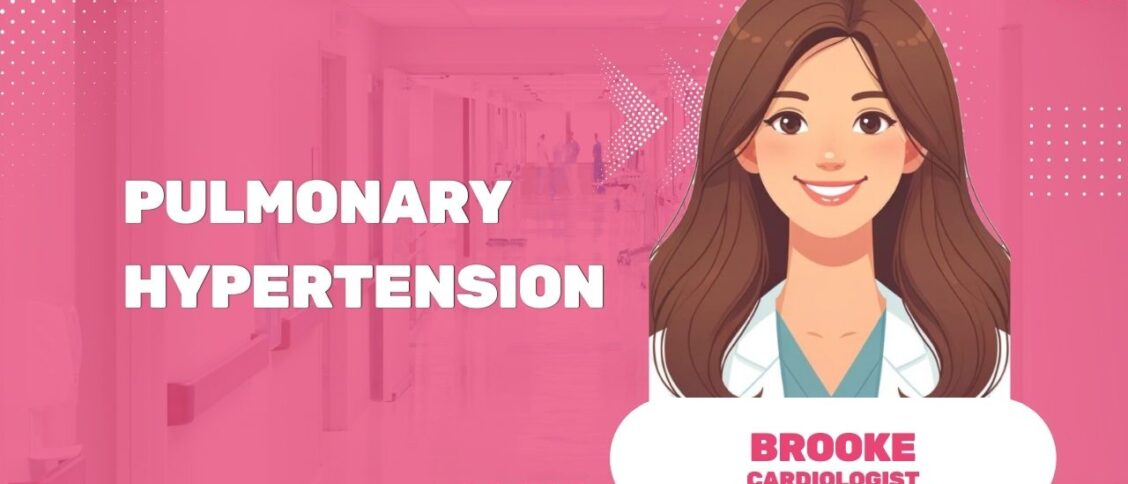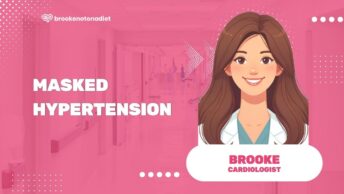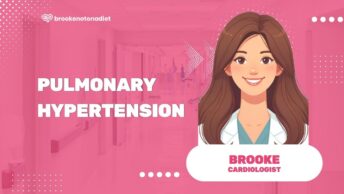Pulmonary hypertension isn’t your everyday, run-of-the-mill health concern. It’s a serious condition that’s often misunderstood and misdiagnosed. It’s a type of high blood pressure that affects the arteries in your lungs and the right side of your heart.
In this article, I’ll delve into the complex world of pulmonary hypertension. I’ll shed light on what causes it, how it’s diagnosed, and most importantly, how it’s managed and treated. So, if you’re looking to understand this condition better, you’re in the right place. Let’s demystify pulmonary hypertension together.
What are the types of pulmonary hypertension?
Before delving into the types of pulmonary hypertension, it’s important to understand the difference between Pulmonary Hypertension (PH) and Pulmonary Arterial Hypertension (PAH). This distinction is crucial due to the dissimilarities between both, particularly in their causes, treatment, and overall management.
What is a difference between pulmonary hypertension (PH) and pulmonary arterial hypertension (PAH)?
Pulmonary hypertension is a general term that refers to high blood pressure in the lungs from any cause. On the other hand, pulmonary arterial hypertension is a subtype of pulmonary hypertension. PAH primarily affects the arteries within the lungs and the right side of the heart. PAH may occur without a clear reason, but some conditions and diseases can lead to PAH.
Here’s a simple way to break it down:
Pulmonary Arterial Hypertension (PAH)
- Primary disease of the lung arteries.
- May occur randomly without an identifiable cause.
- May develop as a result of certain conditions or diseases.
Pulmonary Hypertension (PH)
- Can be caused by a multitude of other factors.
- Reflects increased pressure in the pulmonary arteries.
- Includes the broader condition of PH within which PAH is categorized.
Now that we’ve clarified these distinctions, it’s worth noting that there are five main types of pulmonary hypertension. Each type is categorized based on its underlying cause. As such, understanding the different types is key to checking blood pressure and maintaining a healthy blood pressure range.
- Pulmonary arterial hypertension
- PH due to left heart disease
- PH due to lung diseases
- Chronic thromboembolic PH (clots in the lung)
- PH due to unclear and/or multifactorial mechanisms
Each type of PH has unique characteristics and causes, requiring different treatment strategies. Better knowledge of these types supports the efficient use of a blood pressure monitor, aids in lowering blood pressure, and ensures optimal health. We’ll delve further into these types, their causes, and how they’re diagnosed and treated, in the following sections.
What are the symptoms of pulmonary hypertension?
Transitioning seamlessly from our prior discussion of the five types of pulmonary hypertension, we now turn our attention to the various symptoms associated with this condition. Identifying these symptoms promptly and accurately can lead to an early diagnosis which positively impacts the outcome.
It’s essential to keep in mind that not all individuals with pulmonary hypertension immediately exhibit clear symptoms. At times, symptoms might not occur until the disease has progressed significantly, making regular blood pressure monitoring even more crucial.
Let’s delve into the typical symptoms of pulmonary hypertension:
- Shortness of breath, particularly during physical activity. This is often one of the first signs people notice.
- Fatigue, or feeling noticeably tired or low on energy.
- Dizziness, which may include fainting spells.
- Chest pain or pressure might occur and can sometimes feel severe.
- Swelling in ankles, legs, and eventually, the abdomen (edema)
- Heart palpitations or a racing pulse.
At times, you might feel fine in the early stages of pulmonary hypertension – that’s what makes it so insidious and highlights the importance of maintaining a standardized checking blood pressure routine. Regular checkups with your doctor become even more critical if you are dealing with conditions such as obesity, heart disease, or you’re of advancing age, as these factors can elevate your risk profile.
What happens if you notice one or more of these symptoms?
Don’t panic. Remember, noticing symptoms early and talking to your doctor immediately can help control the disease’s progression. Measures to focus on managing your condition with treatments aimed at lowering blood pressure and easing other symptoms can help you maintain an optimal level of health.
What are the stages of pulmonary hypertension?
At this point, you’re probably wondering about the stages of pulmonary hypertension. In medicine, staging is vital in understanding the severity of disease. Pulmonary hypertension is no different – it’s characterized into four stages, each with unique symptoms and impacts on the body’s blood pressure.
The first stage is often termed as “asymptomatic,”—without symptoms. Even though their pulmonary blood pressure might be increasing, people at this point won’t notice a difference. They won’t feel breathless unless they’re engaging in physical activities. But even then, it’s often shrugged off as fatigue or just being out of shape.
In the second stage, symptoms begin to pick up the pace. There’s noticeable breathlessness during ordinary activities. It’s also not uncommon to feel tired and dizzy. Checking your blood pressure regularly becomes essential. With the help of your blood pressure monitor, you can keep a close eye on your levels, using a blood pressure chart as your guide.
As we reach the third stage, the condition has noticeably progressed. Now, even a small bit of physical activity causes some notable discomfort. You’re left breathless, tired, and it’s barely just morning.
Lastly, the fourth stage —symptoms have become so severe that you’re short of breath, even when you’re resting. If the situation deteriorates this far, lowering your blood pressure becomes a major concern.
Here’s a digestible summary using bullet points:
- Stage 1: No symptoms, even with increased activity.
- Stage 2: Breathlessness and fatigue during normal activity.
- Stage 3: Discomfort with any activity, occasioned by short breaths and tiredness.
- Stage 4: Extreme symptoms that see breathlessness even at rest.
While the prognosis of pulmonary hypertension varies significantly from person to person, noticing symptoms early can make a big difference. By consistently monitoring your health, maintaining a standardized blood pressure checking routine and discussing any changes with your doctor, you’re ahead of the curve in managing this progression. The key is to catch it sooner rather than later—it’s easier keeping the door closed than trying to shut it when the horse has already bolted. Monitoring your patterns, referring to your blood pressure ranges, and engaging your health professional will be your greatest line of defense.
What are the causes of pulmonary hypertension?
It’s pivotal to understand what initiates pulmonary hypertension. For my readers that are new to the concept, pulmonary hypertension occurs when the force against the artery walls in your lungs is too high. This can lead to multiple causes. I’ll delve into each and we’ll discover more about them.
Backdrop of Basic Health Conditions
Certain basic health conditions could be the antecedent to pulmonary hypertension. Some glare at us right from a typical blood pressure chart showing stark anomalies.
- Chronic lung diseases: Conditions such as chronic obstructive pulmonary disease and interstitial lung disease inflate the blood vessels in your lungs.
- Sleep apnea and other sleep disorders: With these conditions, oxygen levels fluctuate during sleep, causing the blood pressure in your lungs to increase.
To steer away from these conditions, it’s imperative to maintain a normal range of blood pressure. If you’re unsure what that may look like, a basic blood pressure range chart could simplify it for you.
| Normal Blood Pressure | Elevated |
| — | — | — |
| Systolic mm Hg (upper number) | Below 120 | 120 – 129 |
| Diastolic mm Hg (lower number) | Below 80 | Lower than 80 |
The Impact of Heart Ailments
While many heart ailments are evident using a routine blood pressure monitor, others may require extensive examination.
- Left heart diseases: Factors like the left heart valve disease or failure in the left ventricle could lead to pulmonary hypertension.
- Congenital heart diseases: Irregularities inherent in your heart’s structure at the time of birth can lead to pulmonary hypertension in the long run.
While this list of causes isn’t exhaustive, it does capture the depth and scope of potential initiators. Though some aren’t directly related to your blood pressure, it would be folly to disregard the importance of checking blood pressure regularly.
It’s inevitable to question – is there a way to prevent these conditions? Yes, by lowering blood pressure and monitoring your health regularly. The road is rarely easy, but it doesn’t have to be strewn with avoidable potholes of neglect and delay. Regular health check-ups, dietary discretion, and ample physical activity is the way ahead. It’s a game of mitigation, not just treatment.
What are the risk factors of pulmonary hypertension?
Several factors up the risk for developing pulmonary hypertension, many of which connect directly to the conditions we’ve previously discussed. Let’s dig into some of those risk factors.
Existing Health Conditions
It’s typical for people with certain health conditions to be more susceptible to pulmonary hypertension. These may include:
- Chronic lung diseases
- Sleep apnea
- Left heart diseases
- Congenital heart diseases
Using Certain Medications and Substances
Specific legal and illegal substances may also raise the risk of this condition. It’s well-documented that prolonged use of diet pills or certain recreational drugs can lead to pulmonary hypertension.
Genetics and Family History
Is pulmonary hypertension running in your family? If so, it could potentially put you at higher risk. Certain forms of pulmonary hypertension are inherited, and research is ongoing to better understand the genetic markers linked to the condition.
High Blood Pressure
High blood pressure, or hypertension, significantly increases the risk of falling victim to pulmonary hypertension.
Managing high blood pressure is a vital tactic in reducing the risk of many diseases, pulmonary hypertension being no exception. While there’s no one-size-fits-all blood pressure range, experts typically define healthy blood pressure as a top number (systolic) less than 120 and a bottom number (diastolic) less than 80.
Blood Pressure Chart
To help my readers understand better, I’ve provided a chart below, illustrating the varying levels of blood pressure:
| Blood Pressure Category | Systolic (mm Hg) | Diastolic (mm Hg) |
|---|---|---|
| Normal | Less than 120 | Less than 80 |
| Elevated | 120-129 | Less than 80 |
| Stage 1 Hypertension | 130-139 | 80-89 |
| Stage 2 Hypertension | 140 and above | 90 and above |
To keep tabs on one’s blood pressure numbers, I suggest using a blood pressure monitor. This device provides vital details that you can track and share with your doctor.
Are you seeking methods on lowering blood pressure? Regular exercise is a great start. Diet is critical too – limit sodium, bump up the potassium, and go for heart-healthy eats.
How to diagnose pulmonary hypertension?
Let’s move onto how to diagnose pulmonary hypertension. It’s crucial to properly diagnose this health condition for suitable treatment plans and lifestyle changes, so much lies in the hands of the healthcare providers conducting the tests.
What Tests Diagnose Pulmonary Hypertension?
Making a definitive diagnosis for pulmonary hypertension isn’t as straightforward as checking blood pressure with a blood pressure monitor. Instead, it often requires several procedure types, including:
- Physical examination: where a doctor listens to your heart and lungs to check for abnormal sounds.
- Blood Tests: these can check for substances in your blood indicating pulmonary hypertension.
- Chest X-ray: can show an enlarged right heart (one symptom of pulmonary hypertension).
- Echocardiogram: this uses sound waves to visualize heart activity.
- Cardiac MRI: provides a detailed look at the heart and surrounding blood vessels.
- Right heart catheterization: considered the most accurate test for diagnosing pulmonary hypertension.
Understanding these tests can provide a clearer idea of what to expect, especially if you’ve noticed symptoms such as shortness of breath or chest pain and are concerned about your health.
Can Pulmonary Hypertension be Cured?
Unfortunately, as of now, there’s no known cure for pulmonary hypertension. Nonetheless, various treatments can manage symptoms and slow the disease’s progression.
Treatments generally focus on:
- Lowering blood pressure: This is key in managing symptoms and improving the patient’s quality of life. One way to keep track is using a blood pressure chart to monitor changes.
Medication regimes are usually tailored by healthcare providers to each individual’s needs and may include a combination of:
- Blood vessel dilators: medications to open narrowed blood vessels.
- Anticoagulants: drugs to reduce the risk of blood clots.
- Diuretics: also known as water pills, they help decrease fluid buildup.
As imperative as medication is, lifestyle changes also score high on managing pulmonary hypertension. Regular exercise, quitting smoking, a diet rich in heart-friendly foods, and lowering salt intake are all effective strategies for lowering blood pressure.
In severe cases, surgery could provide relief, with methods like lung transplantation or atrial septostomy, where a small hole is made between the right and left heart chambers to relieve pressure.
While there’s no cure, there are still many paths to manage and alleviate the pressures of living with pulmonary hypertension. Be assured that doctors, caregivers, and scientific researchers are continually exploring new treatments and hopefully, one day, a full-blown cure. Let’s explore the current treatment methods more in detail in the next section.
What are the treatments for pulmonary hypertension?
Pulmonary hypertension can’t be cured at this time, but treatments can help keep symptoms under control and slow the disease’s progression. Let’s delve into what experts recommend in managing this condition.
Medical Treatments
Medication is the primary go-to for managing symptoms of pulmonary hypertension. The specific drugs prescribed depend on the severity of the disease. Here’s a brief look:
| Drug Type | Effect |
|---|---|
| Vasodilators | Increased blood flow by dilating blood vessels |
| High-dose Calcium Channel Blockers | Lowering blood pressure |
| Anticoagulants | Prevent clotting in small pulmonary arteries |
| Digoxin | Strengthening heart contractions and controlling heart rate |
Remember, regular monitoring of your blood pressure is a must, and a blood pressure monitor can be a handy tool to have at home for this purpose.
Lifestyle Changes
Beyond medication, implementing some lifestyle changes can also play a significant role in managing pulmonary hypertension:
- Diet: Lowering cholesterol and sodium intake
- Exercise: Regular light exercises – walking, cycling
- Avoiding high altitudes and extreme physical activities
- Regular check-ups: Keeping an eye on blood pressure ranges
- Avoiding Stress: Mental health is crucial in managing any chronic disease.
Understanding your blood pressure chart is an essential factor in treatment. Regular checks allow you and your doctor to tailor your daily activities, diet, and medication for optimal health.
Surgical Options
Surgery is reserved for severe cases of pulmonary hypertension. Procedures typically considered include transplantation and balloon pulmonary angioplasty.
In the fight against pulmonary hypertension, there’s always a way forward even though it may seem challenging at first. While it’s true that there’s currently no known cure, doctors and researchers are continuously exploring new treatment methods. Each day, we move a step closer to a future where this condition can be managed more efficiently – toward a healthier, happier life.
Why pulmonary hypertension is dangerous?
Pulmonary hypertension is a grave health condition that can be extremely perilous if not properly managed.
Is Pulmonary Hypertension Fatal?
A common question that arises is: “Is pulmonary hypertension fatal?”. The truth is, pulmonary hypertension can be fatal if left untreated. It’s critical to keep in mind that sufferers can lead normal lives by effectively managing the condition with the correct treatment and routine checkups.
Pulmonary hypertension continuously increases pressure within the blood vessels of the lungs, causing the heart to work harder. Over time, this extra strain can lead to heart failure, a potentially life-threatening condition. I’ve found a 2016 study that states the survival rates for pulmonary hypertension significantly improve with the right medication and lifestyle changes. When we assess survival rates, the table below provides a succinct image:
| Percentage of Survival | Time Period |
|---|---|
| 68 | 1 Year |
| 57 | 2 Years |
| 48 | 3 Years |
When Should You Call Your Healthcare Provider for Pulmonary Hypertension?
The key to surviving pulmonary hypertension is being cognizant of your bodily reactions. Keeping an eye on your blood pressure ranges using a blood pressure monitor is essential. Some symptoms to watch for include:
- Dizziness
- Fainting spells
- Fatigue
- Rapid heart rate
- Swollen ankles or legs
Experiencing any of these symptoms means it’s time to get on the phone and reach out to your healthcare provider.
When Should You Go to the ER for Pulmonary Hypertension?
Emergencies can occur quickly and unexpectedly with pulmonary hypertension. If you experience any of the following symptoms, it’s best to go straight to the ER:
- Chest pain
- Severe breathlessness
- Dizziness
In such circumstances, don’t satisfy with just checking blood pressure at home; immediate medical attention is required. Through efficient management and awareness, it’s possible to lead a healthy life even with pulmonary hypertension.
How to prevent pulmonary hypertension?
Plenty can be done to prevent pulmonary hypertension. With certain habits and modifications to your lifestyle, the risk of developing this condition can be significantly reduced.
Monitor Your Blood Pressure Regularly
Keep a keen eye on your health, specifically your blood pressure. Regular monitoring can help in early detection of diseases like pulmonary hypertension. Blood pressure ranges can vary, hence it’s prudent to have a chart handy to make sense of the readings.
Healthy Lifestyle Choices
- Balanced Diet: Eating a well-balanced diet rich in fruits, vegetables, and whole grains can go a long way in maintaining overall health and reducing high blood pressure.
- Regular Physical Activity: Exercise regularly to keep your heart healthy and strong.
- Maintain Healthy Weight: Obesity is one of the major risk factors for many heart diseases, including pulmonary hypertension.
- Limit Alcohol and Avoid Illicit Drugs: Excessive alcohol can raise your blood pressure and damage your heart. Similarly, certain illicit drugs have been linked directly to pulmonary hypertension, so it’s best to avoid them altogether.
Medication and Doctor’s Advice
Even if you don’t have problems with high blood pressure now, regular check-ups are a must. Seek professional medical advice and follow it conscientiously. If you’re already on medication for any other treatment, make sure to ask your doctor about the potential risks related to pulmonary hypertension. Remember, lowering high blood pressure plays a massive role in preventing this condition.
Stay proactive about your health, whether it’s through keeping a sharp eye on your blood pressure, leading an active life, or following strict medical advice. It’s all about taking the reins and being in charge of your well-being to prevent diseases like pulmonary hypertension.
How to track blood pressure at home?
Monitoring your blood pressure at home is a practical way to take an active role in managing your health, especially if you’re at risk for or already have pulmonary hypertension. This doesn’t mean trips to the doctor should be abandoned, but is a good supplement to those checkups. Let’s take a look at the tools you need to get started and how to properly use them.
What Blood Pressure Monitor to Use?
With such a wide variety of blood pressure monitors available in the market, finding the right one can be overwhelming. When choosing a blood pressure monitor, look for the following:
- Automated and digital monitors: These are easy to use and provide readings on a display screen. They typically use sensors and have memory or storage features.
- Cuff size: Ensure the cuff fits properly around your upper arm or wrist for accurate readings. A cuff that’s too big or too small won’t provide an accurate reading.
- Validation: Look for a monitor that’s clinically validated for accuracy and meets the standards of notable health organizations like the American Heart Association.
- Budget-friendly: You don’t need to spend a fortune on a monitor. Many affordable options provide accurate measurements.
- Easy to read display: A large, clear display will help you read the results without any difficulty.
Once you’ve got your blood pressure monitor, it’s also important that you use it correctly:
- Rest for a few minutes before checking: Activity can temporarily elevate your blood pressure, distorting readings.
- Position yourself correctly: While checking, you should be seated with your arm level with your heart.
- Maintain a record: Keep a log of your readings for future reference or to share with your healthcare professional.
Final words
Pulmonary hypertension’s a serious condition, but it’s manageable with the right tools and knowledge. Regular monitoring of your blood pressure at home can be a game-changer, ensuring you’re always aware of your health status. It’s essential to choose the right blood pressure monitor, use it correctly, and keep a record of your readings. These steps can help you stay ahead of your condition, allowing you to lead a healthier, more informed life. Remember, your health’s in your hands. Stay vigilant, stay informed, and most importantly, stay healthy.







